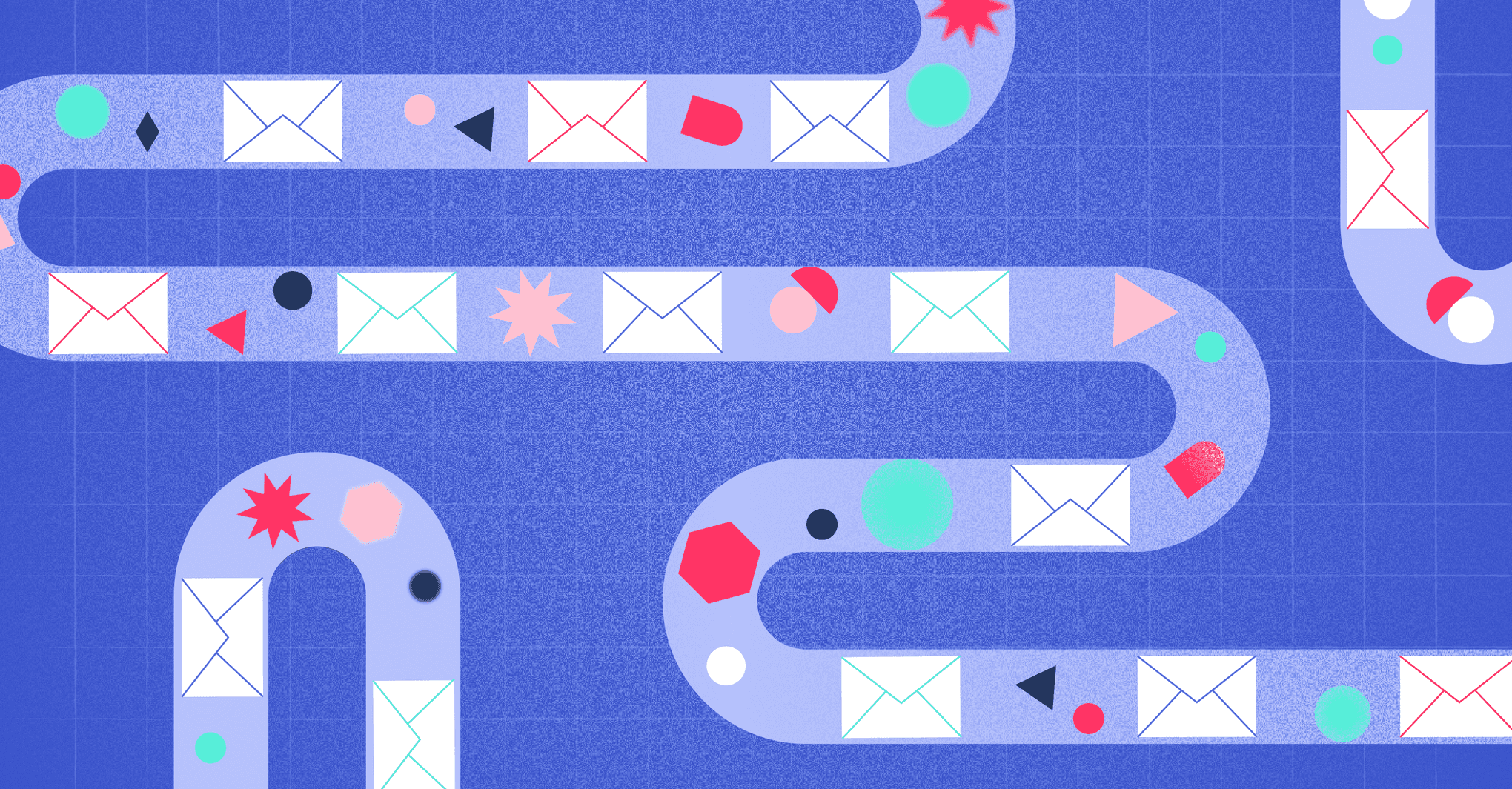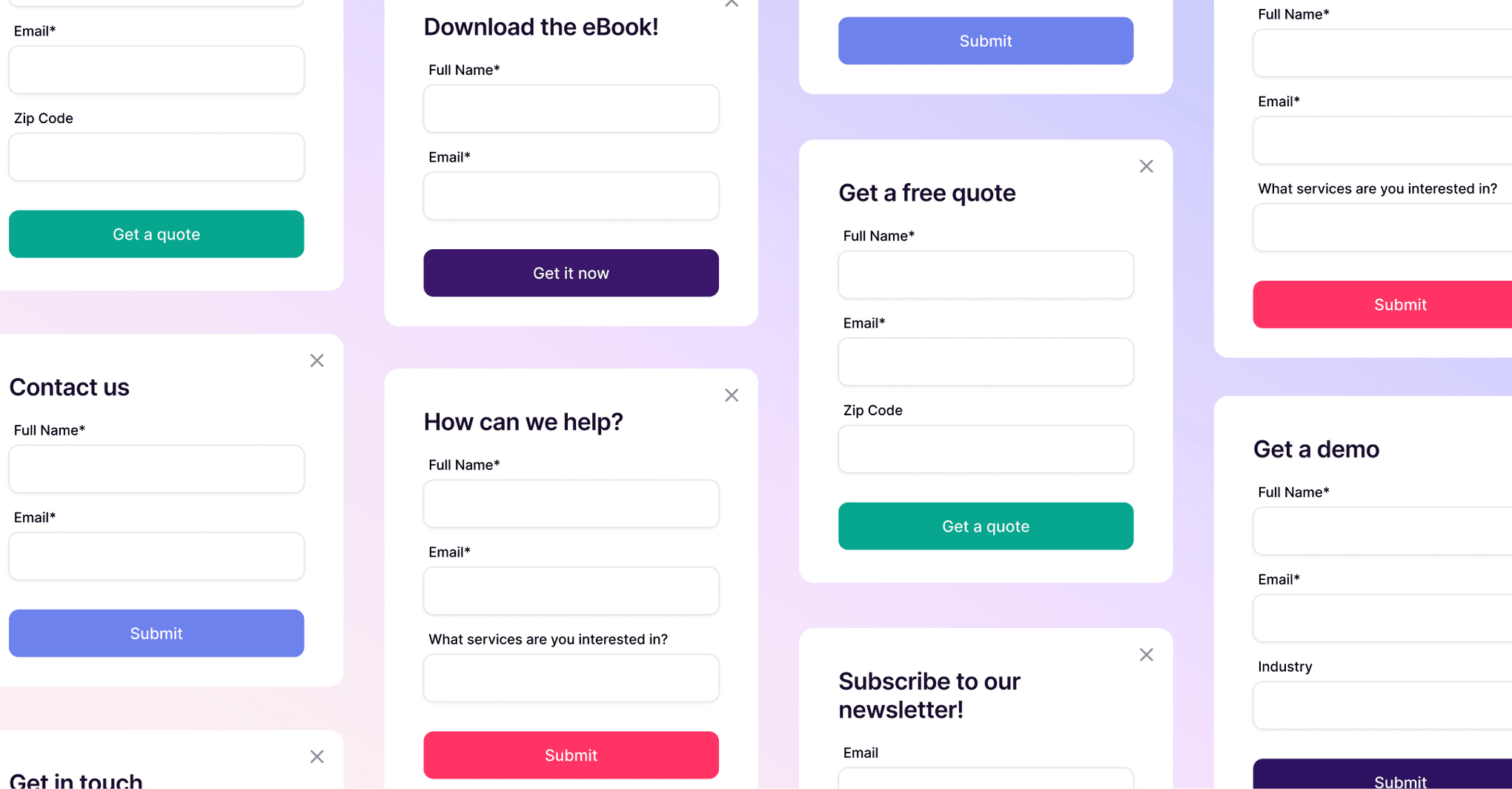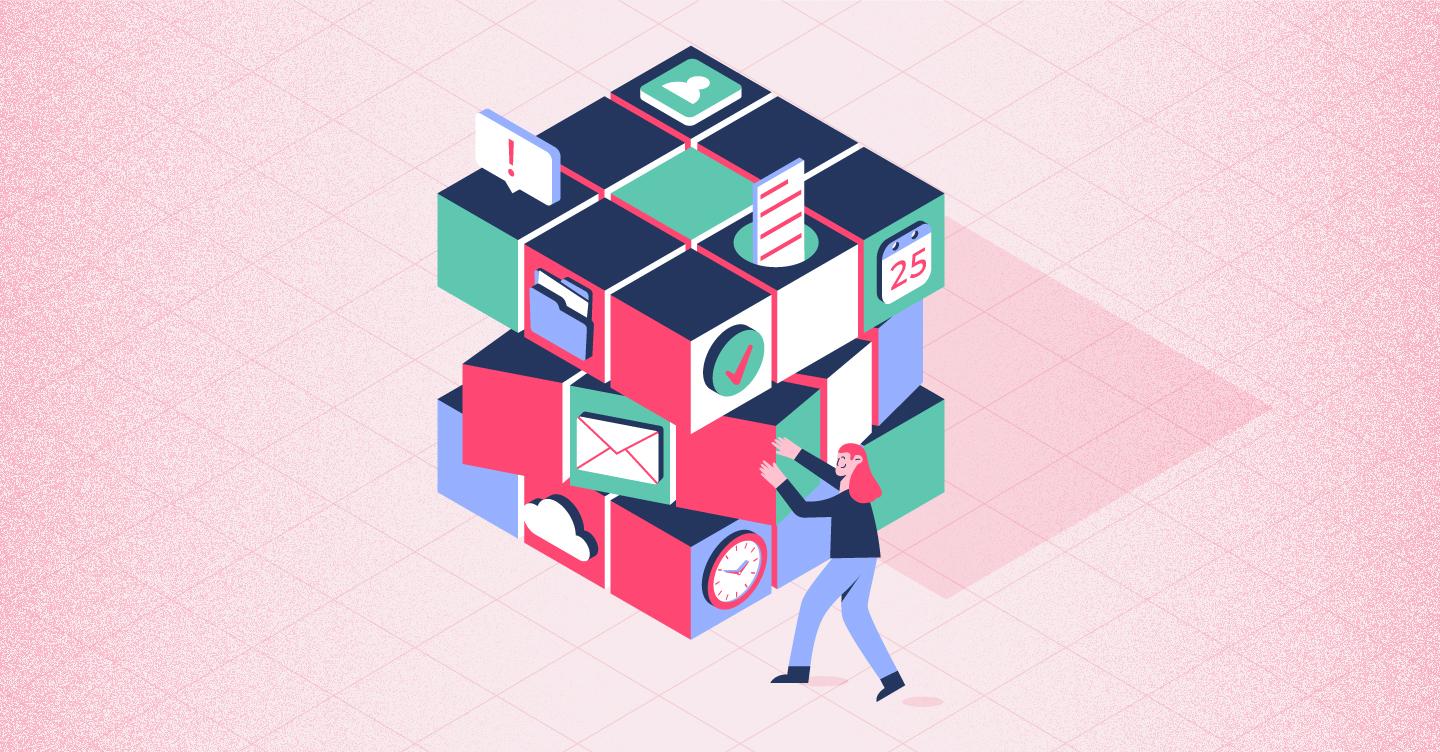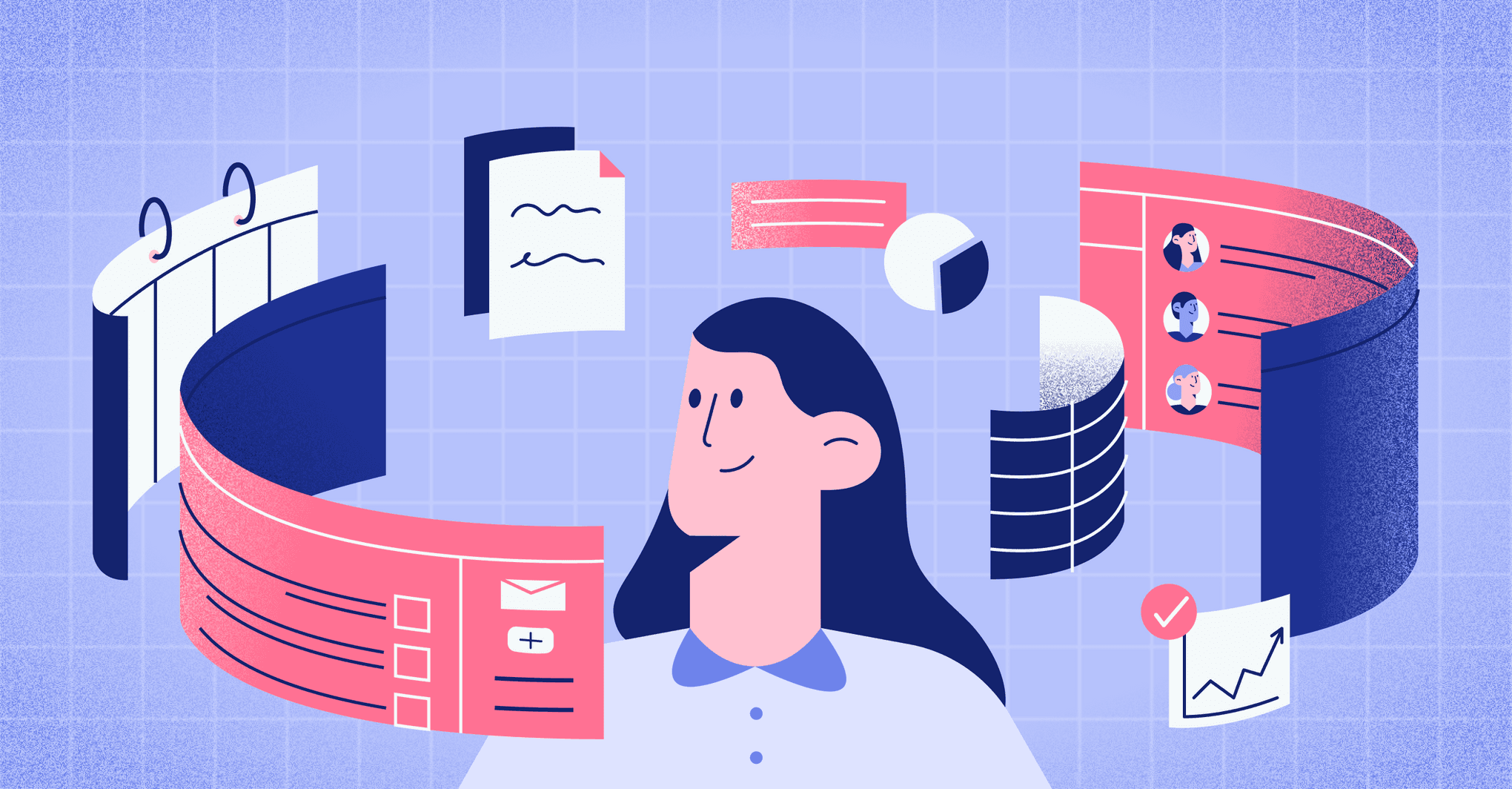Copper Staff
Contributors from members of the Copper team
The modern sales process isn’t about pressure—it’s about pacing. And if you want to close more deals, you’ve got to master how to guide potential customers through the full customer journey, from curious browser to brand advocate.
That’s where building a sales funnel comes in.
A well-structured funnel gives your sales and marketing teams a shared framework for attracting, educating, and converting prospects. Instead of chasing down cold leads, you’re walking with them—step by step—through the top, middle, and bottom of the funnel. You're not just qualifying leads; you're nurturing relationships.
Let’s break down what actually happens at each stage of the sales funnel, and how you can optimize your sales process to turn more interest into action.
Giving your sales pitch too early makes you look like a used car salesman just trying to close a deal. Instead of buying, leads avoid you completely.
At each stage of the sales funnel, you need to offer specific information, content, or answers that help your prospects move closer and closer to making a purchase.
Let’s break down exactly what happens at each stage of the funnel and how you can optimize each step to better appeal to your target audience.
Stage 0: Research and Preparation
Although research and preparation isn’t an actual stage in the sales funnel, it’s still incredibly important to creating future success. Before you get started, get to know who you’re trying to attract and who you are as a company.
At the top of the funnel, your main job is to spark interest. Think of this as the hello stage in the customer journey. The goal isn’t to pitch—it’s to educate, inspire, and invite discovery. Here, your sales and marketing teams work together to cast a wide net and start qualifying leads by attracting the right audience.
Use content like:
-
SEO-optimized blog posts
-
Educational videos
-
Viral social content
-
Webinars and virtual events
This is where building a sales funnel truly begins. Don’t worry about closing yet—focus on visibility and engagement. Start tracking what resonates and which audiences begin showing signs of interest so you can start qualifying leads for the next stage.
Start by identifying your own brand values. What does your company stand for? What do you stand for as a sales rep? What qualities, characteristics, or skills are important to your team? What is your brand’s personality?
Understanding the core of your company gives you a foundation to create longer-lasting, more valuable customer relationships.
For example, Patagonia’s mission isn’t to sell jackets or hiking gear. Their mission is to save the planet. This larger “reason for being” creates a shared interest between the company and potential customers, encouraging shoppers to build a long-term relationship with the brand.
You also want to get to know your target customer beyond just a potential payday. Creating a buyer persona gives you the rundown of who your ideal customer is, what problems they’re facing, and what solutions you can provide to make their life easier.
Your potential buyer persona will also make it easier to identify what content is needed during each stage of the sales funnel. Understanding your prospects’ goals, frustrations, and personality will allow you to tailor the information you’re providing to better address questions or concerns they may have.
Stage 1: Awareness
At the very top of the funnel is the awareness stage. The main purpose of this phase is to improve the visibility of your brand and start collecting leads. While you want to be sure you’re targeting the right group of people, it’s also okay to cast a wide net at this stage.
During the awareness stage, you want to bring attention to your brand but you don’t need to push any particular product or service. Instead, you should focus on sharing ideas, solutions, or advice.
Here are a few ways you can build awareness about your brand:
- Sponsored social media posts
- SEO
- Guest posting or guest podcasting
- Ebooks and whitepapers
- Independent research
- Webinars
- Videos
- Infographics
- In-person events
Content at this stage in the sales funnel should be informative, but also fun and interesting. It needs to stand out in an already crowded space. Don’t be afraid to get creative.
Here's an example:
Refer back to your buyer persona to identify areas where your target audience is hanging out. Get to know what social media platforms they use frequently and target those areas. Run advertisements on non-traditional platforms they might use, such as dating apps or video games if it fits within your brand persona.
The key here is to create content that will attract your target audience’s attention where they’re already spending their time––even if it’s not the “best practice” platforms, such as Facebook or Twitter. If your target audience isn’t active in those areas, don’t waste your time or money.
Determine a specific process or action that would push the lead to the next phase of the sales funnel, such as signing up for your newsletter or registering for a webinar. Have a clear conversion in mind, such as social media follows or email newsletter signups, and measure how many people you’re attracting compared to how many people are converting.
If your conversion rate is low, you’ll want to revisit the content you’re creating. Look for better posting opportunities or content that may be more appealing to your audience.
Stage 2: Interest and evaluation
Once a lead has converted from the awareness phase, they enter the interest and evaluation stage of the sales funnel. At this point, you’ve attracted a lead’s attention and they want to know more about a particular idea, concern, or question. However, they’re still not prepared to consider a purchase.
Your main goal at this stage is to build a relationship with your new lead to determine what their end goals are. You can do this through creating a consistent brand voice and message that your target audience can relate to, and sharing it through various content channels.
Here are some content ideas for the interest stage of the sales funnel:
- Email campaigns
- Blog posts
- Lead magnets
- Chatbots
- Social media accounts
- Free trials
- Retargeting campaigns
At this stage, it may help to focus on value-based selling and what you can offer your customers to enhance their journey and experience.
During the interest and evaluation stage, you want to put out feelers to see what your lead engages with.
Tracking what links they click in your email campaigns or what posts they engage with on social media can help you better understand what problems they’re facing and what solutions they might be looking for.
Be sure to follow up with your lead about any questions they have or additional information they need. Although they aren’t ready to purchase yet, you should focus on maintaining a relationship that positions you as a helpful expert. This will make it more likely that they come to you when they’re ready to buy.
You can also use retargeting to get your ads in front of previous site visitors. Retargeting through Facebook or Google Ads can bring leads who may not have converted the first time around back to your site to complete a signup or check-out process.
The transition between the second and third stage of the sales funnel may not be as clear as from the first to the second. As your leads start to become more familiar with what you offer and how you can help solve their problem, they’ll start to develop a greater interest in certain products or services.
Slowly ease them into the next stage by offering free trials, discounts, videos, or even 1-on-1 demos to increase their desire for your products or services.
Stage 3: Desire
At this stage of the sales funnel, your lead is a full-blown prospect. Not only have you caught their attention and got them interested in your brand, but they’re also actually considering making a purchase.
However, you’re not quite ready to close a deal.
Your prospects still aren’t 100% sure if your solution is right for their needs. They’re going to be looking for how well your offer fits within their budget, their current business model, and what kind of outcomes they can expect.
Here are some popular kinds of content to include at the desire stage:
- Testimonials
- Pricing pages
- Case studies (here's how to create them)
- Discount codes
- Customer reviews and product recommendations
- Live demos or tutorial webinars
- Consultations
- Product comparisons
At this point in the customer journey, the lead should feel confident that your solution is not just a fit—but the best fit. Keep qualifying leads with clarity and honesty, and make the transition to action feel seamless.
If they haven’t already taken advantage of a free trial or a discounted offer, this is a great time to offer one. The investment is low on the prospects’ end, and gives them a better feel for how your solution will make their lives easier without giving a full commitment.
Stage 4: Action
This is where the sales process meets its pivotal moment. Your lead has moved through the top, middle, and bottom of the funnel, and now they’re ready to buy. But this stage isn’t just about closing the deal—it’s about opening the door to a lasting relationship.
The customer journey doesn’t end here. In fact, these first few days or weeks after the purchase can make or break your long-term success with that customer. If they feel like you’ve vanished after getting the sale, it’s a major red flag—especially for subscription-model funnels that depend on ongoing engagement and trust.
That’s why it’s crucial to set up a strong onboarding experience. Whether it’s via email series, phone support, or interactive training webinars, your post-sale process should guide customers through setup, implementation, and early wins. Give them time to adjust to what they’ve already bought before even thinking about upselling.
Helpful content at this bottom of funnel stage includes:
-
Onboarding emails or welcome kits
-
Customer success tips
-
Webinars and training sessions
-
Product walkthroughs or live support calls
-
Follow-up emails that offer help—not pressure
Make it a point to check in consistently. See how the experience is going. Ask what they need. Answer their questions before they even ask. A smooth onboarding process shows that your sales and marketing efforts aren’t just about making the sale—they’re about making the customer successful.
Once your new customers feel confident and comfortable with your product or service, that’s when you can begin gently reintroducing them into the sales funnel. Not as strangers, but as loyal buyers who are already primed for more.
Step 5: Re-engagement
Loyal customers are gold. Just a 5% increase in customer retention can drive profit up by 25% to 95%. That’s the power of playing the long game in your sales process.
And this is where the real magic happens. Re-engaging customers who already had a positive experience with your brand doesn’t just increase repeat purchases—it fuels referrals and keeps your sales funnel full at the top, middle, and bottom.
Here are a few ways to keep the relationship going strong:
-
Referral programs
-
Upsell campaigns
-
Re-engagement email sequences
-
Product-specific tutorials and webinars
-
Surprise-and-delight offers or exclusive previews
At this point in the customer journey, you’re no longer qualifying leads from scratch. You’re reactivating people who already know you, trust you, and just need the right nudge. But without a clear system in place, it’s easy to let those opportunities slip through the cracks.
That’s where a CRM like Copper comes in.
With Copper, you can track every customer interaction across the entire sales and marketing journey—from first touch to follow-up, and far beyond the initial sale. You’ll know exactly where each contact sits in your funnel, what content they’ve engaged with, and when it’s time to re-engage. No guesswork. Just clean, automated workflows that make building a sales funnel (and keeping it humming) far easier.
You can:
-
Set up automated reminders to follow up with past customers
-
Segment contacts based on previous purchases or engagement
-
Personalize campaigns that match their interests and timing
-
View reports to see which re-engagement efforts are actually driving revenue
Essentially, your customers should never run out of content to engage with. Even if they’ve already purchased and are pleased with the solution you’re providing, you’ll want to create offers, information, and advancements that will keep them interested.
At this stage in the sales funnel, focus on keeping your long-term relationship going. This could be through introducing new features and products that customers might be interested in or encouraging your customers to become ambassadors for your brand.
At this stage of the sales funnel, your job isn’t to push—it’s to stay relevant. Webinars, product demos, and educational content should go deeper than the basics. Help your existing customers become power users. Give them a reason to fall in love with your product all over again.
Measure your re-engagement content by the lifetime customer value of each individual. Identify how long they’re staying a customer with your brand and how much they’re spending during that time.
This can help you identify if you’re reaching people who are invested in your products or services.
Your sales funnel stages should always appeal to your target audience.
There isn’t a cookie-cutter approach to creating a good sales funnel. To truly optimize your sales team's process, you need to understand how your audience moves through the customer journey—what motivates them, where they hesitate, and what helps them convert.
While these content options for each phase of the funnel can help you get started, you’ll see the best results by paying close attention to what your audience actually needs. Just make sure you’re covering every stage—top, middle, and bottom—with intention.
And if you want a simpler way to manage it all?
Try Copper for free and see how easy it is to organize leads, track progress, and build a sales and marketing engine that runs smoothly—without the clutter or chaos.






